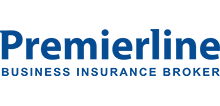Making a plan to start or grow your business
In this article, we will show you some of the things that you need to include in your business plan to help take your business forward.
If you aren’t too sure where to begin, download the business plan pack, template and financial tables from The Prince’s Trust.
How to start your business plan
A business plan should start with some information about yourself. Who you are, why you want to start a business or grow your existing business and your strengths and weaknesses.
About you
When starting off a business plan, write a few details about yourself. Not only is a business plan a guide to where you want to take your business, but it can also help you find grants, loans or investors that will help you financially.
If you want to attract financial support, you will need to sell yourself as the business owner.
Why start a business?
People start a business for many different reasons, and knowing your motivation for starting a business will help you have a clearer vision of the work that you will have to put in to reach your goal.
Some of the reasons that people start businesses are:
- Passionate about their idea or expertise
- Financial freedom
- Flexibility on work hours
- Decision-making freedom
The reason for running your business is important because this is an indicator of how much work you are willing to put into the business to make it a success. If you are passionate about your idea or work then you will be willing to put the time in, whereas if you’re only starting the business for more flexibility, you may find that it is more work than expected, leading to disappointment.
Your strengths and weaknesses
One of the best ways to figure out your strengths and weaknesses is to do a SWOT analysis, which will help you to see your Strengths, Weaknesses, Opportunities and Threats.
Identifying your strengths and weaknesses will allow you to figure out the best way to run your business, whilst working to make your weaknesses into strengths.
The opportunities and threats will help you to identify gaps in the market for your business to exploit, but also potential threats to your business, such as competition or economic downturns.
Strengths
The internal characteristics that give you and your business an advantage over competitors.
Ask these questions to identify business strengths:
- What sets you apart from the competition?
- What is your competitive advantage?
- What assets do you and your business have?
- What do customers like about you and your business?
Weaknesses
The internal characteristics that put you and your business at a disadvantage relative to competitors.
Ask these questions to identify business weaknesses:
- What are competitors doing better?
- What are your existing customer complaints/pain points?
- What could you do better?
- Does your business have any other disadvantages?
Opportunities
The external elements in your business environment to help you reach your business goals.
Ask these questions to identify business opportunities:
- What external sources could be used in your favour?
- Are there any new partnership opportunities?
- Could you consider entering new cost-efficient markets?
- What do existing customers want?
Threats
The external elements that could endanger the integrity or success of your business goals.
Ask these questions to identify business threats:
- Are your competitors innovating in your target market?
- Are there legal, political or economic risks in the market?
- Is your market growing or shrinking?
- Are resource costs inflating?
What does your business do?
The next thing you will need to include in your business plan is a clear and concise description of what your business will or does do. You should first decide whether or not it will offer a service or a product. A product is something tangible which you might design, manufacture and sell, whereas a service is something that you do for customers, such as a contractor trade or consultancy work.
Describe your offer
Use your business plan to describe the kind of product or service that you will offer to your customers. This will give you an accurate view of what you are offering to customers, allowing you to have more focus in the way that you run your business.
Describing your products or services in a great amount of attention and detail, addressing items identified in your SWOT analysis is also a good way to attract outside investment for your business, as it demonstrates a strong knowledge of your industry.
You should also outline whether or not you are going to start your business right away. Currently, COVID-19 has caused disruption to businesses globally. Starting a business in this tough climate may not be a wise decision from a financial point of view unless you can demonstrate that your business can provide a product or service that can thrive in the current external climate.
Who are your customers?
When writing your business plan, think about who your customers are going to be. You can either sell to consumers, other businesses or both.
What does your average customer look like?
Having an idea of what a typical customer will look like for your business will make it easier to think of how you will market your product.
You should also think about the geographical location of your customer. You need to think whether or not you will offer a nationwide service or only serve your local community. If you are selling goods from a premises then you will need to consider how easy it is for your customers to find you.
Why will your customers buy from you?
Considering why your customers will choose your business, or why they should choose your business, will help you think of how you should run your business to be able to attract as many customers as possible.
Try to think of the unique experience that you could offer customers that your competition doesn’t.
You should also include whether or not you have already started selling to customers in your business plan, or if you have any customers that are waiting to buy from you or have already booked your services.
Market research
Market research is an opportunity for you to find out more about other businesses and write in your business plan about how you will make your business competitive in the market that you operate in. Use these methods to see what you can learn from the current marketplace.
Desk research
Desk research is any information that you have found from using publicly available resources such as the internet to look into the business that you want to start. In your desk research, you should look for:
- Competition – Other businesses providing the same, or similar, product or service.
- Pricing – Gather a consensus on how much you should charge for your product or service.
- Business practice – Searching for how other businesses model themselves can give you some ideas on the best ways to run your business.
- Who are your customers – You may have an idea of what your average customer looks like, but doing some actual research will give you a picture of their age, occupation, income and lifestyle that you can use in your marketing.
Field research
Going out and collecting your own research will be difficult because of COVID-19, but once the UK starts to open up again, do the following research:
- Questionnaire – Do your own research by creating a questionnaire that you can ask people to complete to help give you more of an insight into the mind of your customers.
- Visit competitors – Consider visiting your competition’s premises to see the products they sell and what messaging to use to attract customers.
- Test Trading - You could start trading on a limited scale before you have completed your business plan. You can then use the results that you have seen from test trading to help build your business plan.
Marketing Strategy
In this section of your business plan, you should outline what you will do to attract customers to your business, and outline how much you think you will be spending on marketing.
Marketing options
There are plenty of innovative strategies that you can adopt to drive customers towards your business. Digital marketing is now a common practice in the industry, but don’t neglect more traditional forms of marketing. Consider the following:
- Social media – It is estimated that there were 3.6bn social media users in 2020, and with most platforms offering free services for setting up a social media presence, it is worth using social media as a starting point to connect with customers. Following this, you could consider investing in some targeted social media advertising which will allow you to reach a targeted audience to attract them to your business based on their interests. Before you start investing in paid social media advertising, consider speaking to a marketing professional or marketing agency as they will be able to advise on marketing strategies and provide indicative costs. For further reading, see our guide on developing a social media plan for business.
- Website – Having a website is a great way for customers to see what you have to offer and, if you have the right functionality, even make a purchase. A website can be costly and can take time to get it to a professional level, so make sure you have the time and money to invest in a professional-looking website. For tips to help you get started, see our guide on setting up a business website.
- Word of mouth – Many businesses still rely on word of mouth referrals, especially when working in their local community. Getting word of mouth referrals usually relies on offering a level of customer service that will have your customers singing your praises and recommending you to others.
- Content marketing – A way that you can raise the profile of your business and demonstrate your expertise is to produce articles, videos, images and other engaging pieces of content that will attract customers. The higher the quality of your content, the better reputation you will have as an expert in your industry.
Not all forms of marketing work for every business, so in your business plan, outline why you are choosing the type of marketing that you are using.
Marketing costs
Whilst marketing is essential in bringing customers to your business, it also represents a significant investment.
Some quick research can help you find out how much you will need to spend to bring customers to you and work out how you can make your marketing cost-effective.
Business logistics
In the logistics section of your business plan, you are going to outline how your business will function on a daily basis.
You will need to think about:
- How you are going to produce the goods or offer the service that you have promised your customers.
- How you will deliver your promise to your customers.
- The payment methods you will use, including pricing, what you will use for transactions and when you will take payments from customers. For example, you could have customers pay for a product on your business premises using a debit or credit card, or for a service, a customer could pay a 20% deposit via bank transfer with the remaining balance due a week before you provide the service, or once it is complete. Whatever you choose, you’ll need to consider business cashflow.
- How you will deal with your suppliers (if applicable).
- Whether or not you will need business premises.
- The equipment that you need to operate.
- How you will transport products or use transport for services.
- Legal obligations.
- Business insurance requirements to transfer financial risk.
- Staffing and how you will manage them.
Financial forecasts
For the finance section of your business plan, you should outline in clear terms the value of your goods or services. Clearly state your product pricing and other financial information such as:
- The product name.
- How many of these products or services you can offer in a certain timescale.
- The components that you need for your product and their associated costs.
- The total cost for your goods or services including any fees or VAT
- The cost per unit
- The price per unit
- The profit margin as both a figure in pounds and as a percentage
- The markup percentage
Once you have this information, you will be able to produce a financial forecast.
Financial forecast
In your financial forecast, you will estimate your income and outgoings on a month by month basis. A financial forecast is the chance to demonstrate that you have thought about the finances of your business to show an investor or bank in order to secure a loan or grant.
In your financial forecast, you should include a basic sales forecast and costs forecast as a month by month overview to get a rough figure on how much income you will have throughout the year.
You will then want to go into more depth about the kind of expenses that your business will typically incur. This should include premises costs, personal withdrawals, staffing costs, transport costs and anything else that draws money from your business. This will give you an idea of how much financial backing you need to start or invest in your business.
Backup plan
The COVID-19 pandemic has shown us that disaster can strike at any moment, so it is wise to always have a backup plan for your business.
It is important to include both short term and long term solutions to disasters to ensure that there is a plan for any scenario.
Short term solutions could include selling assets to help cash flow, freelance staff to assist or short term loans, whereas long term solutions are more likely to create a heavier burden for businesses, such as applying for government support, taking out loans or making staff redundant. Take a look at our guide on business continuity here.
Business insurance with Premierline
A business plan gives you a really strong start to running your business, but a business plan might not necessarily prepare you for some of the perils of running a business. Thefts, fire, business interruptions or staff accidents are things that you can plan for, but leave you open to financial losses if you aren't covered.
With Premierline, it's simple to compare business insurance quotes online if you know your insurance requirements. However, if your needs are more complex or you would like advice on the insurance covers that are right for your business, call us and we'll be happy to offer our award-winning service.


















